For nearly eight to nine months in a year, the mangrove swamps by Thane creek become a sojourn for the seasonal exodus of flamingoes that migrate from Kutch. It is said that Rann of Kutch is the breeding ground and Mumbai, the feeding ground of these majestic birds. Mumbai Metropolitan Region has two IBAs (Important Bird and Biodiversity Areas) in Sewri Mudflat and Thane Creek. According to Deepak Apte, former Director at Bombay Natural History Society (BNHS), these areas sustain about 70,000 waders and 1,20,000 flamingoes during peak ‘wintering’ months. These hotspots are well-known, but there are lesser known ‘sanctuaries’ on the east bank of Thane creek. For the past decade, Navi Mumbai has been drawing flamingoes and other shorebirds that migrate on the Central Asian Flyway.
One such refuge is Karave Wetlands and Flamingo Point. Adjacent to ‘Training Ship Chanakya (TSC) – Indian Maritime University’, is a nearly 13 ha tidal wetland surrounded by mangroves (popularly called Chanakya / TSC wetland) that is a biodiversity haven. It is a roosting site for, predominantly, the Lesser flamingo (Phoeniconaias minor) which need hyper-specific conditions that support their diet requirements and behaviour. As per IUCN Red list, Lesser flamingoes are ‘Near Threatened’.
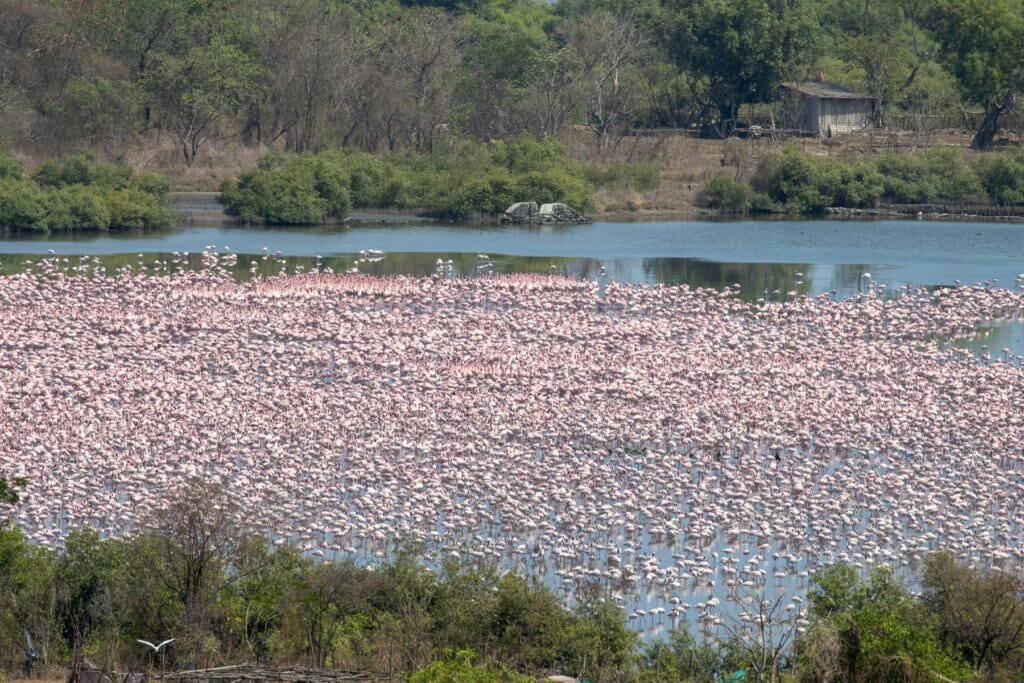
By November, lesser flamingoes migrating from Kutch land in thousands along the creek with juveniles in tow; it is here at the exposed mudflats at low tide that they feast on microscopic blue-green algae and diatoms. Juveniles are nothing like the pink elegance that the adults are. Dull grey, almost black and white birds, they appear to be a washed-out version of the adults. Three to four months of feeding on the algae replete with carotenoids, they start donning the pink garb.
Read more: Thane creek gets the Ramsar Tag, but worries over its ecological future persist
When the tide rises, the lesser flamingoes fly into shallower waters to rest and wait out the high tide. This is where the role of inland waterbodies becomes significant. For flamingoes around Karave, Vashi, Panvel creek and Uran, the TSC wetland is a vital rest and recreation zone. Like disciplined soldiers in a drill, the flamingoes fly in and out of the creek to the rhythm of the tide, every day. With their presence the waterbody becomes a sea of pink. Greater flamingoes (Phoenicopterus roseus) too make an appearance. They form a miniscule percentage of the flamingo population at Navi Mumbai that migrates here.

lesser flamingoes engage in courtship display forming larger stands, it’s called a
flamboyance. Pic: Padmaja Parulkar

By May, the lake becomes an amphitheatre for a spectacular show when newly-minted adults indulge in courtship ritual. The juveniles having come of age are ready to choose their mate for furthering their progeny. The flamingo mating dance is raas lila of the avian world! Young males come together in large numbers and put up an elaborate performance, a synchronised ballet of sorts. Stretching their S-shaped necks and forming a pinker cluster amidst an existing ‘sea of pink’, they bob and wag their heads in deliberate movements. The female bystanders watch the ritual keenly for a prospective partner.
Read more: How a Navi Mumbai citizens group fought for the flamingos
Some evenings, even as the flamingoes frolic, another set of species that had been lying low until then take centrestage. Waders that have invaded the wetland along with flamingoes fly into limelight. There are mixed parties of Sandplover (Lesser, Greater and Kentish), Curlew Sandpiper (in breeding and non-breeding plumage), Little Stint and Dunlin. They weave in and out on the firmament, shimmering silver in the sun and appearing like confetti descending from above.
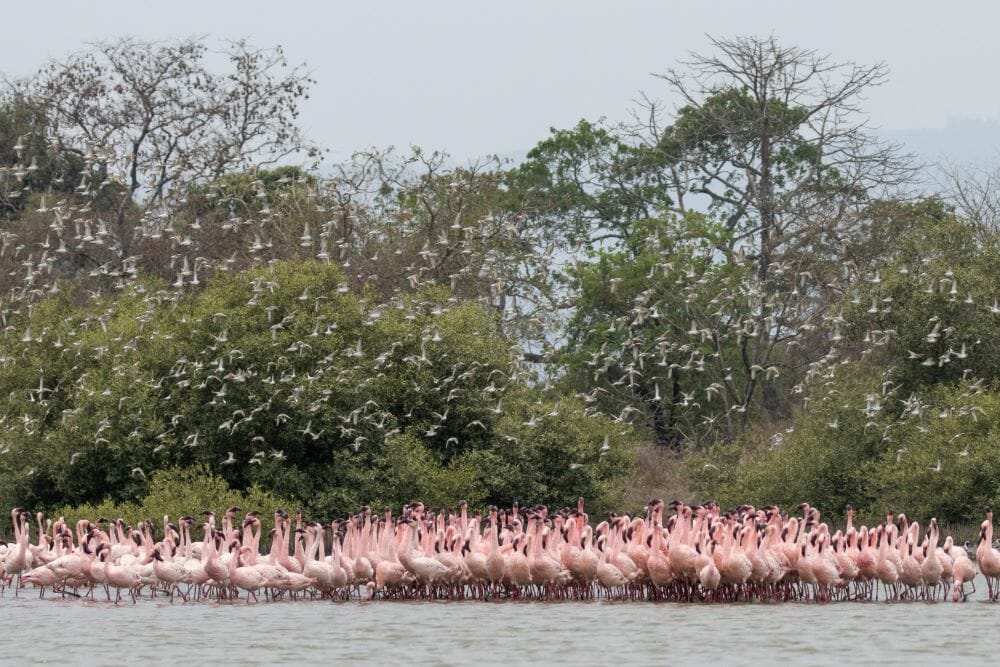
As the sun hangs low over the horizon, the overactive waders cool down and land in the microhabitat of the aerial roots of a mangrove shrub or on a rocky bund nearby. It’s possible to catch a glimpse of them, then. The uncommon Grey Plover and Pacific Golden Plover are not part of the gregarious party but have been observed (in breeding plumage) in flocks by themselves at various coordinates. For diehard birders these species are a big draw for which they travel from afar, even outside of Mumbai. Yet another uncommon visitor is the Near Threatened Eurasian Curlew.

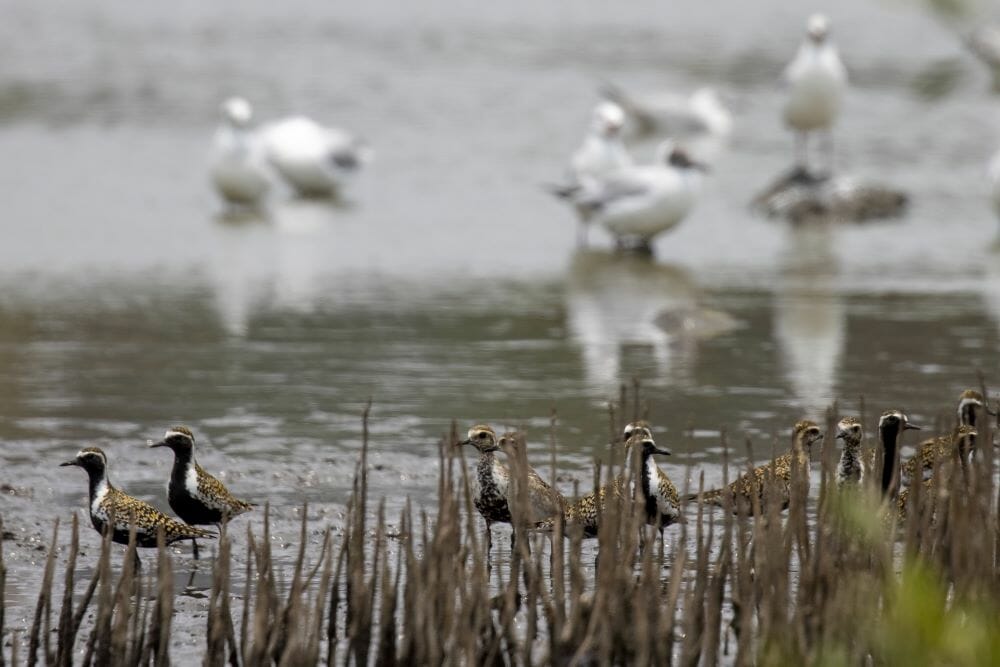
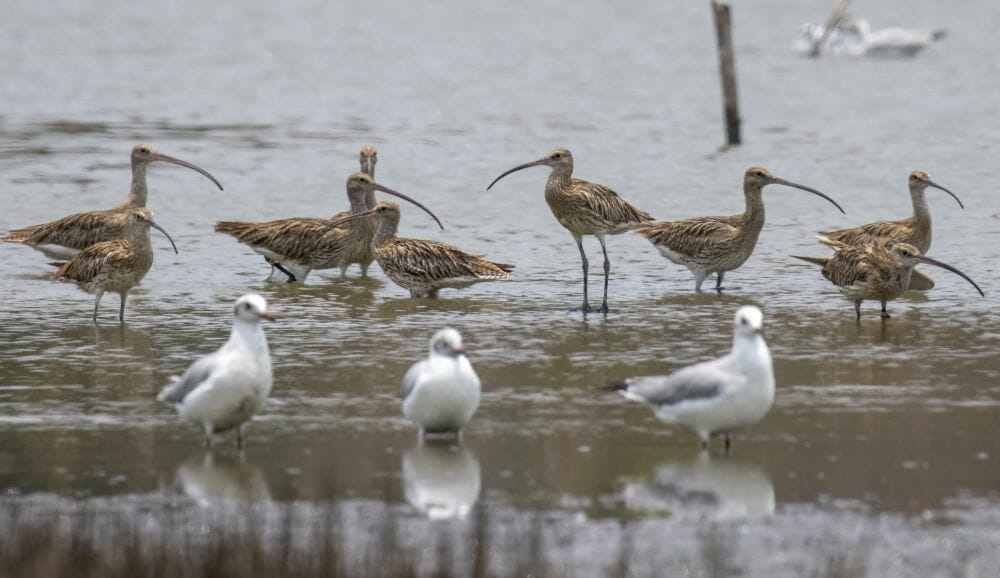
It is heartening to see the Common Redshank in large standalone flocks with chicks, dozing peacefully, resting on one leg. The waders show great ‘site fidelity’ and high annual return rate to Chanakya wetlands.
On the sidelines, the Painted Stork go about their job in utter nonchalance as though they couldn’t be bothered by the loud neighbours and their PDA (public display of affection). This is another visitor that figures on IUCN’s Red list as Near Threatened. Though they are in goodly numbers here, globally they are on the decline.
In this mélange of aquatic birds, flocks of seagulls (Black- and Brown-headed) and terns (Arctic, Little and Caspian) make appearances too.
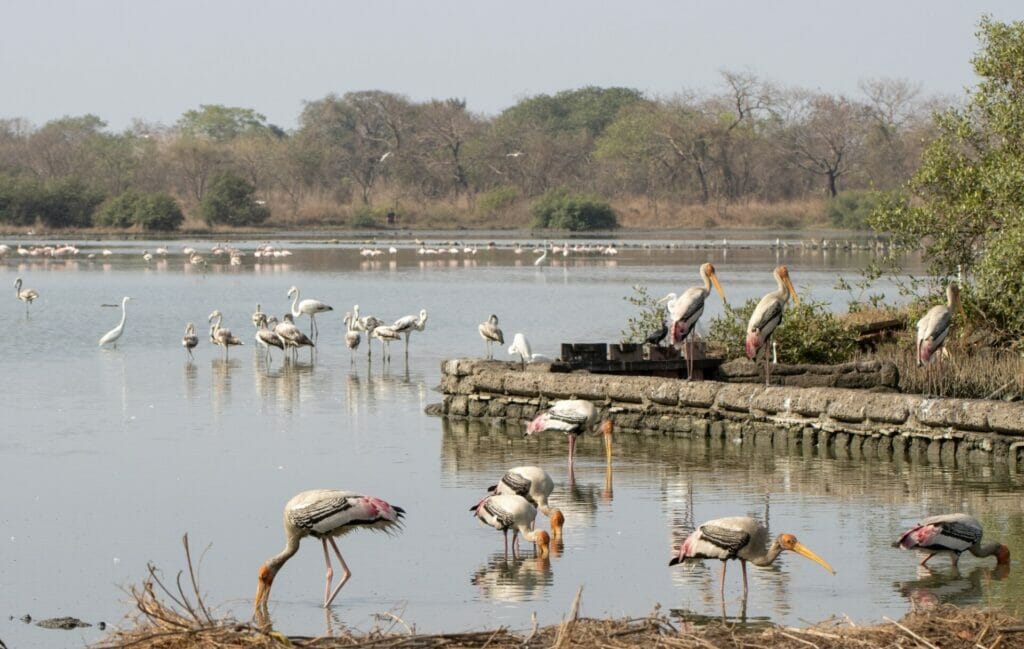
Apart from migratory shorebirds, TSC is throbbing with resident wetland birds such as egrets and herons. Tiny pools amidst the mangroves also sustain the near threatened black-headed ibis and numerous other shy waterfowl such as the black-crowned heron, striated heron, and white-breasted waterhen in a testimony to the robust health of the wetland-mangrove habitat.
BNHS studies have shown how Chanakya wetlands and mangroves are critical sites for shorebird – winter migratory species – conservation in Thane creek. It points out that TSC has one of the highest congregation of shorebirds in the Thane creek ecosystem. “Currently, these sites are facing threats from landfilling excavation, blocking tidal water movement, mangrove incursion, fishing, recreational and commercial development and other factors,” says Mrugank Prabhu, scientist with BNHS.
A service road project (from Plot 7, Sector 58 to TS Chanakya) by NMMC (Navi Mumbai Municipal Corporation) was underway until a fortnight ago. However, the Mangrove Cell of the Maharashtra Forest Department has not allowed the work to continue due to lack of adherence to appropriate procedures and clearances. The excavated periphery of the wetland site now stands like an eyesore. Over the past few days, the waterbody has dried up drastically, too.
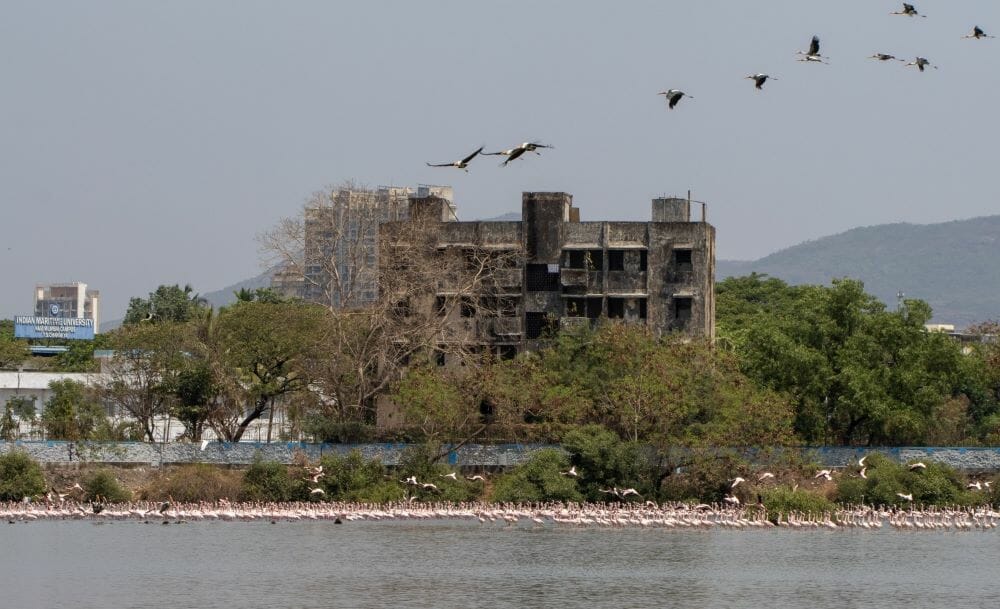
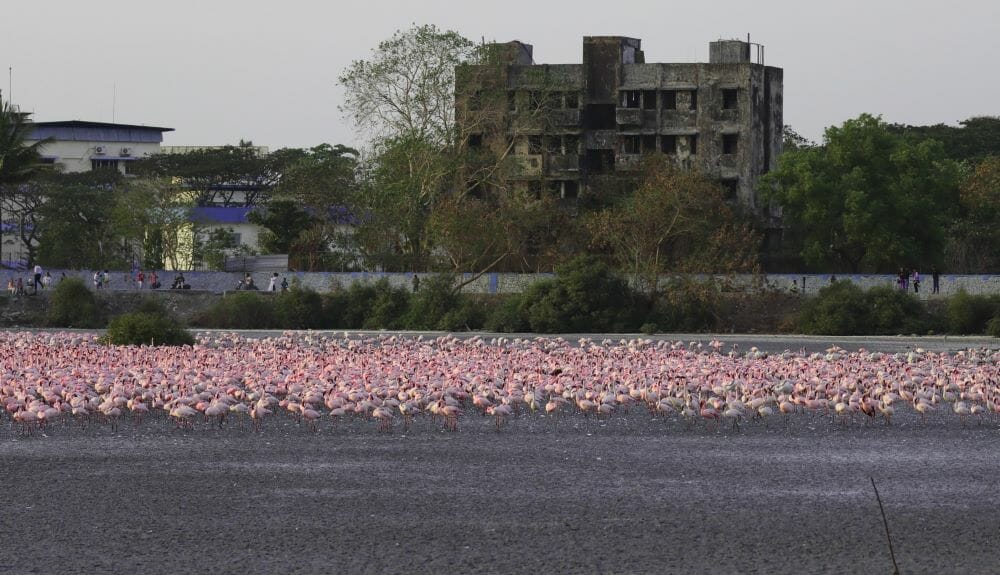
Environmental activist Sunil Agarwal, who has been championing the cause of wetland conservation in Navi Mumbai, feels that Chanakya wetland commands the status of a bird sanctuary. “By virtue of being an intertidal wetland, it falls under CRZ – 1. It also figures in National Wetland Atlas of MoEF protected by a Supreme Court order,” he informs.
It would be a travesty and tragedy of the highest order if these wetlands were to become another anthropogenic disaster.
How lucky you are to almost step out to such natural beauty. At one time I used to regularly take my kids to Wadala to see the Flamingoes but now the kids have grown and the flats are too far…… I will enjoy the beauty of these lovely creatures through blogs like yous! Thanks for sharing these photos.
खूपच छान अप्रतिम
Very well written. Records the biodiversity of this wetland and pictures are treat for readers.
Extremely well researched and informative article.We visit these wetlands as frequently as possible and feel there is urgent need to preserve them.